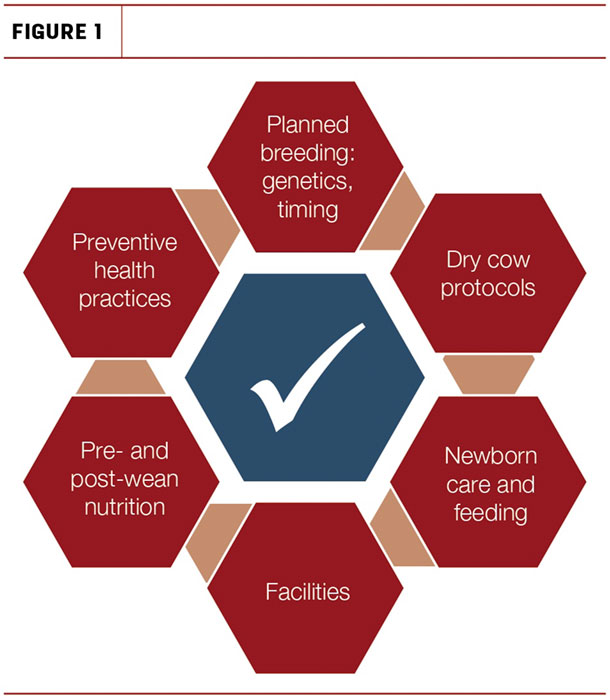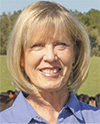One current discussion suffering from disconnect is the growing use of beef bulls on dairy cows. The beef-on-dairy practice is a frequently addressed topic, but in many cases the information presented, while potentially important and insightful, is conveyed from a single perspective.
One current discussion suffering from disconnect is the growing use of beef bulls on dairy cows. The beef-on-dairy practice is a frequently addressed topic, but in many cases the information presented, while potentially important and insightful, is conveyed from a single perspective.
Dairies and calf raisers evaluate considerations within the context of their normal practices, while cattle feeders and packers assess the potential of these animals as they would any calf. And both groups run the risk of assuming the other intuitively understands and accepts the paradigms they operate under.

Dairy-beef calves may offer increased value throughout the production chain, but this potential will only be realized as communication and expectations align, along with a balanced assumption of risk and profit opportunity.
Take the perception and valuation of baby calves, for example. A dairy likely sees these as individual units in the categories of heifer, bull or beef-on-dairy crossbred and assesses a standard unit price based on their designation.
Beef cattle buyers, however, are concerned with buying pounds at any stage in the production cycle. The level those pounds should be priced at are based on an animal’s genetic and management history.
The genetic side of this equation has received a lot of attention, and several beef breed associations and at least one major seedstock producer have established programs to identify bulls well suited for Holstein or Jersey crosses.
The key point is: These recommendations are based on specific bulls, not specific breeds. During a recent Beef Species Symposium at the national meeting of the American Society of Animal Science, Dr. Luis Burciaga-Robles of Feedlot Health Management Services emphasized that there is more variation within sire breeds than between them. Simply putting a straw of cheap beef semen in a cow does not automatically create a desirable feeder calf.
From the dairy’s perspective, getting a cow bred is of much greater concern than the outcome of its pregnancy. The cost of missing one breeding cycle (from feed and other inputs, and delayed start of lactation) is more than what the calf is worth. Incorporation of a mindset of purposeful beef breeding will require a clear expectation of positive return on the additional investment of time and money.
Early management of these calves is equally critical to future success. At the same symposium, Dr. Vinicius Machado of Texas Tech University reviewed the key impactors of a beef-on-dairy enterprise: fetal programming (including nutrition and stress management in dry and transition cows), colostrum/transition milk provision, housing, pre- and post-weaning calf nutrition, preventive health practices and use of appropriate technologies.
All will have lifelong impacts on health, performance, efficiency and, ultimately, profitability. It’s often been said that calves never get over a bad start – or a good one.
Enterprises historically focused on raising or trading future beef feeder calves are acutely aware of the role reputation plays in prices offered for these animals.
Individuals wishing to produce or develop beef-on-dairy calves as a new endeavor need to recognize that feeders seek out animals from sources they have had good experiences with and often pay premiums for them. At the same time, they will avoid or discount purchases from producers they associate with previous problems or low-performance lots.
The first few weeks of life are particularly critical in developing sought-after feeder calves. To realize the potential value of a beef-on-dairy bull (or heifer), these animals will need to receive the same level of care typically provided to replacement heifers.
This includes a protocol for colostrum and transition milk feeding, adequate levels of milk or milk replacer, preventive health and medical procedures, and a dry feed program that supports rumen development, frame growth and low-stress weaning.
However, this may represent not only a change in paradigm but also a significant increase in up-front costs for the dairy or calf raiser. In many cases, it will also present challenges with logistics, available labor and facility capabilities. The decision to essentially double the number of head in an intensive calf-rearing program must involve a wide range of considerations.
Nutrition remains key throughout a calf’s life. Rate, timing and pattern of gain can all impact the eventual composition and quality of a harvested carcass. Periods of minimal growth should be avoided along with programs that may compromise lean tissue and frame development.
The feeding program is obviously the primary driver of average daily gain (ADG), and it is also closely tied to animal health and resiliency. Targeted use of proven feed additives can supplement or optimize feed utilization, making a feeding program more effective or economical. Common choices would include probiotics such as yeast, fermentation extracts and enzymes, and feed-through fly control.
Many replacement heifer production arrangements are primarily based on a per-day fee structure, which do not provide any incentive to upgrade diets, utilize additives or other technologies, or focus on long-term health or genetic expression.
A shift in compensation calculation may be necessary for operations to consider such arrangements. Communication between parties will be needed to establish equitable agreements and define specific expectations.
Calves sold outside a predetermined marketing arrangement will need to carry some level of proof of any value-added practices, similar to documentation commonly provided for preconditioning programs in the beef industry.
These concepts, of course, are applicable across all the stages in a calf’s life where it may change ownership. Buyers, the next step up the chain, will weigh perceived risk against potential gain, including the risks imposed by variation in input costs, market cyclicity and seasonality, as well as situational expectations of calf health and performance.
Two other pricing factors touted widely are consistency and traceability. If a dairy could produce a full lot of same-sex calves of similar age, coming from cows with similar genetics that were all bred to the same well-matched bull, there is no doubt these characteristics would add value in the eyes of a feeder or packer.
These animals would facilitate feeding management, likely finish as a group and be attractive to customers such as restaurants and branded retailers. But this scenario requires a fairly large number of cows, would likely involve use of sexed semen (or even embryo transplants) and hinges on a defined management plan. So while the potential may be significant, it is not an opportunity available to all producers.
There is still a lot to learn about optimizing this beef production niche. Research and experience will provide insights into both well-recognized and yet-unknown differences in raising and feeding beef-on-dairy animals, and better quantify the impacts of various production practices.
At the same time, partnerships and marketing agreements are sure to evolve that better recognize current value, risk and potential, and establish best management practices.
Success in this evolving arena will require effective communication of relative value, calf history and expectations, and a better understanding of the needs, opportunities and challenges of both halves of the beef-on-dairy paradigm.






